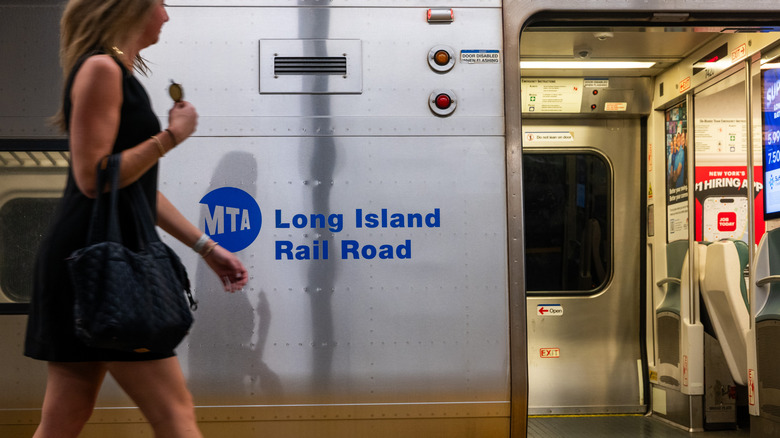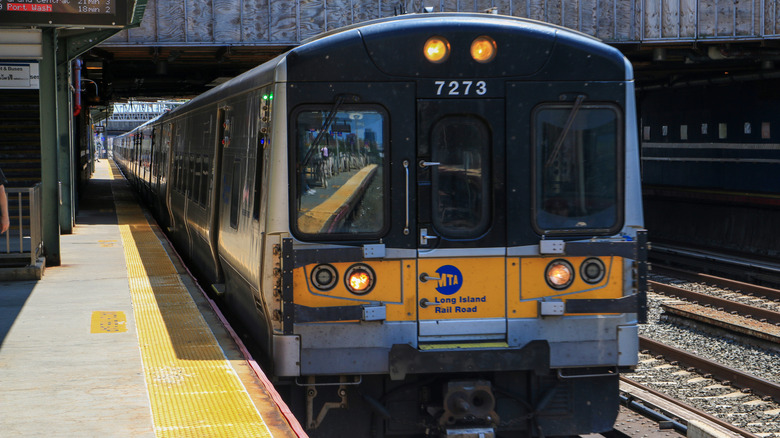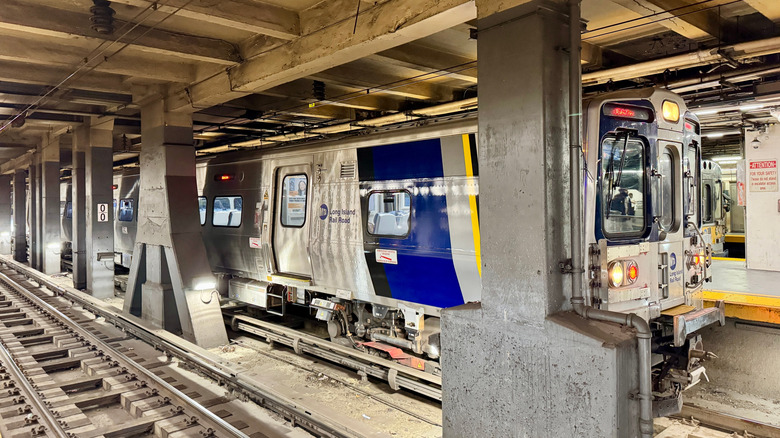What Happened The Last Time The Long Island Rail Road Went On Strike?
As is to be expected of public transport in New York, the Long Island Rail Road (LIRR) can be monstrously busy. In fact, the Metropolitan Transportation Authority (MTA) says it's "the busiest commuter railroad in North America." From Monday to Friday, approximately 125 million people use it, which makes sense, given that New York's speed limits are so low. What's really astonishing is how efficiently it can typically manage all of these people — a feat made possible by the precise engineering that keeps trains on track. In July 2025, a press release from the MTA boasted that "through the first half of the year, 96.6% of trains reached their destination on time, the railroad's best rate in its history outside of pandemic years." With all of this in mind, a strike on the railroad can and will cause pandemonium. This railroad is a principal means of travel to and from Long Island, after all.
The last time the Long Island Rail Road went on strike was in 1994. In June of that year, a headline in The New York Times proclaimed that "work-rule changes are at the heart of a dispute," and they certainly were. Track workers, of which there were approximately 600 at the time, were to be subject to changing rules that would eliminate overtime pay. The expectation of weekend and night work without overtime was a primary factor in the dispute, with one worker, Robert Mantle, telling the newspaper that "After 21 years of doing day work, I can't imagine doing nights and weekends ... there's not one guy who's ready to give that up." Combine this with proposed limitations on pay for injured workers and support from other departments in solidarity, and a strike was all but inevitable. Fortunately, it was also relatively short-lived.
The effects and resolution of the 1994 Long Island Rail Road strike
When the strike began on Friday, June 17, 1994, after discussions proved fruitless in the early hours of the morning, it had really been two years in the making. Negotiations for new workers' contracts had been ongoing since they first came up for renewal in 1992. One of the sorest points of the discussions, inevitably, was the pay rise offered for the 2,300 jobs that were at stake. The MTA was unwilling to offer the 17% increase that the employees wanted.
A prominent figure in keeping the lines of communication open between the two was none other than then-Governor Mario Cuomo. Three days later, The New York Times reported that Cuomo had a lot to gain. Not from the strike itself, but from his response to it. That response was "tied to political benefits," the newspaper stated, and it could certainly be said that fighting to get commuters on their way again with a peaceful resolution could have helped his case in the election against George Pataki. Ultimately, Pataki prevailed in that election and became New York governor, but it wasn't for the want of trying on Cuomo's part.
Cuomo spoke with representatives of both sides, and resolved the situation through Peter Stangl, who was in charge of the Metropolitan Transportation Authority. The New York Times quoted Stangl as saying that he chose to "pay the ransom before it got too bad out there." With that, services were restored on June 19, and there hasn't been a full-blown strike on the system since. However, in September 2025, tensions arose again over familiar matters of wage rises, and the federal government had to intervene to prevent (perhaps only temporarily) another occurrence.
History may repeat itself with another Long Island Rail Road strike
After two days of negotiations, the 1994 strike was resolved. But it seems that 31-year run may be coming to an unfortunate end. On September 15, 2025, the MTA published a news report stating, "Some LIRR unions had threatened to go on strike as early as this week. However, the unions are postponing this action. We remain committed to resolving this issue and ensuring that Long Island Rail Road service is not shut down in the future."
Again, something had led to the deterioration of the relationship between railway employees and management. In September 2025, The New York Times reported that negotiations for a rise in pay had failed. "MTA officials said they had made a fair offer — consisting of a 9.5% wage increase over three years — that had been accepted by many of the region's other rail unions," the newspaper stated, but that some unions (including the Transportation Communications Union and the Brotherhood of Railroad Signalmen) did not accept these terms. They sought pay increases of 16% over an additional year, and with an agreement not forthcoming, made the decision to strike. The industrial action would have begun on September 18, 2025, but an emergency board was ultimately set up by President Trump in response to a request from union representatives.
This, effectively, delayed the strike for a period of three months at least. There is an opportunity for all parties involved to reach an agreement, as the window to do so potentially extends to May 2026. If the strike goes ahead, a shuttle bus service could be provided on the busier routes between the subway and the LIRR, but though it would run every ten minutes, the sheer scale of travelers needing alternate transportation would be overwhelming.


